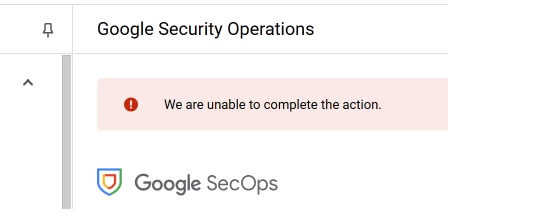We have a customer which is applying a one-time code for GCP Logs to a tenant owned by a MSSP. When applying the code, the only error we received is below. We have tried several times with the same code, also requested a new code, but all the same result. Is there any insight into this error and how to resolve?





